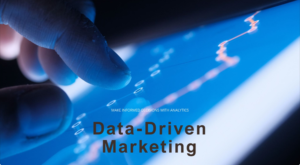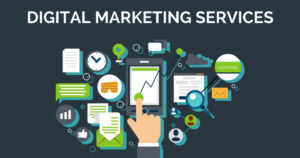In the fast-paced world of digital marketing, efficiency is key. Marketing automation has emerged as a powerful tool to streamline campaigns, enhance productivity, and drive better results. By automating repetitive tasks, marketers can focus on strategic planning and creative endeavors, ultimately boosting their overall effectiveness. Here’s how you can use marketing automation to streamline your campaigns and achieve success.
What is Marketing Automation?
Marketing automation refers to the use of software platforms and technologies designed to automate repetitive marketing tasks. This can include email marketing, social media posting, ad campaigns, and more. The goal is to improve efficiency, deliver personalized experiences, and generate better ROI.
Benefits of Marketing Automation
- Efficiency and Productivity
- Automation saves time by handling routine tasks, allowing marketers to concentrate on strategic initiatives. This increases productivity and ensures that campaigns run smoothly without constant manual intervention.
- Personalization at Scale
- Marketing automation enables the delivery of personalized content to large audiences. By segmenting your audience and tailoring messages to individual preferences, you can enhance customer engagement and loyalty.
- Data-Driven Decisions
- Automation tools provide valuable insights and analytics, helping marketers make informed decisions. By analyzing data, you can optimize campaigns, understand customer behavior, and identify opportunities for improvement.
- Improved Lead Management
- Marketing automation helps in managing leads effectively. Automated lead scoring, nurturing, and tracking ensure that potential customers receive timely and relevant information, increasing the chances of conversion.
Key Strategies for Using Marketing Automation
- Email Marketing Automation
- Segmentation and Personalization: Use automation to segment your email list based on demographics, behavior, and preferences. Personalize email content to make it more relevant and engaging for each segment.
- Drip Campaigns: Set up automated drip campaigns to nurture leads over time. These campaigns send a series of pre-scheduled emails based on user actions, guiding them through the sales funnel.
- Social Media Automation
- Scheduled Posting: Automate your social media posts to maintain a consistent presence. Tools like Hootsuite and Buffer allow you to schedule posts in advance, ensuring that your content reaches your audience at optimal times.
- Social Listening and Engagement: Use automation tools to monitor social media conversations and engage with your audience. Automated responses can handle common queries, while more complex interactions can be flagged for manual follow-up.
- Lead Generation and Nurturing
- Lead Scoring: Implement automated lead scoring to prioritize leads based on their engagement and behavior. This helps your sales team focus on high-potential prospects.
- Nurturing Campaigns: Use automation to send targeted content to leads at different stages of the buying journey. This keeps your brand top-of-mind and encourages prospects to move closer to conversion.
- Customer Relationship Management (CRM) Integration
- Integrate your marketing automation platform with your CRM system to ensure seamless data flow. This allows for better tracking of customer interactions and a more holistic view of the customer journey.
- Analytics and Reporting
- Use the analytics capabilities of your automation tools to track campaign performance. Monitor key metrics such as open rates, click-through rates, conversion rates, and ROI. Use this data to optimize future campaigns.
Implementing Marketing Automation
- Choose the Right Platform
- Select a marketing automation platform that aligns with your business needs and goals. Popular options include HubSpot, Marketo, Pardot, and Mailchimp.
- Set Clear Objectives
- Define clear objectives for your automation efforts. Whether it’s increasing leads, improving customer retention, or boosting sales, having specific goals will guide your strategy.
- Develop a Content Strategy
- Create a comprehensive content strategy that supports your automation campaigns. Ensure that you have relevant and engaging content ready for each stage of the customer journey.
- Train Your Team
- Invest in training for your marketing team to ensure they can effectively use the automation tools. Understanding the features and capabilities of the platform is crucial for maximizing its benefits.
- Monitor and Optimize
Regularly monitor the performance of your automated campaigns and make necessary adjustments. Continuously optimize your strategies based on data insights and feedback.
Conclusion
Marketing automation is a game-changer for businesses looking to streamline their campaigns and drive success. By automating repetitive tasks, personalizing interactions, and leveraging data insights, you can enhance your marketing efforts and achieve better results. Start implementing these strategies today to unlock the full potential of marketing automation and take your campaigns to the next level.
By embracing marketing automation, you not only improve efficiency but also deliver more targeted and effective campaigns that resonate with your audience. Happy automating!





Hello. remarkable job. I did not expect this. This is a splendid story. Thanks!
Great write-up, I’m normal visitor of one’s blog, maintain up the nice operate, and It’s going to be a regular visitor for a lengthy time.